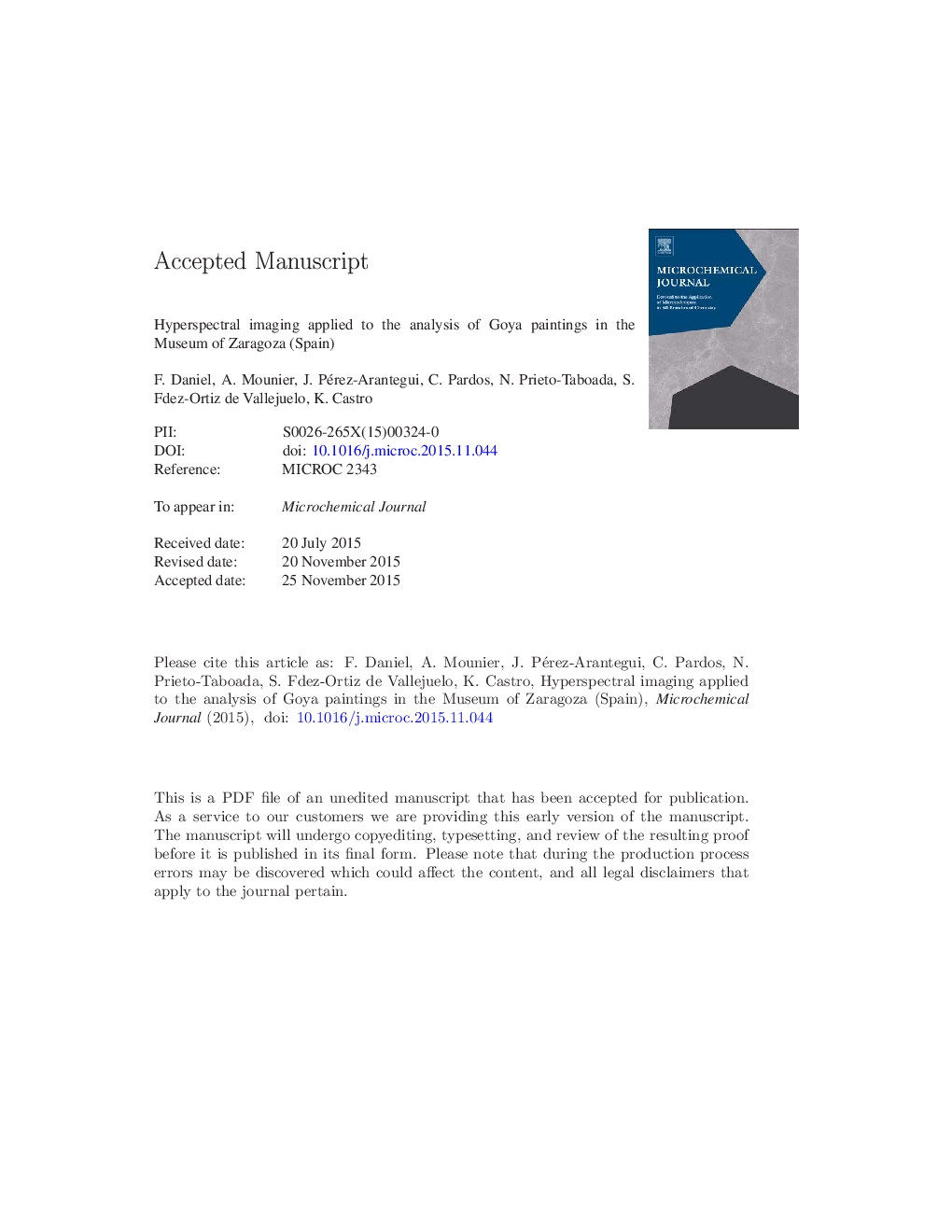| Article ID | Journal | Published Year | Pages | File Type |
|---|---|---|---|---|
| 7641448 | Microchemical Journal | 2016 | 31 Pages |
Abstract
In recent years, research carried out mostly on paintings has proved that imaging spectroscopy techniques can be used effectively for material identification and mapping on works of art. Regarding the analysis of paintings, the hyperspectral imaging provides the associated reflectance spectrum for every point of the image, which can be compared with those of a reference database. In this work, we evaluated the analytical suitability of two different hyperspectral imaging systems of Goya's paintings kept in the Museum of Zaragoza (Spain). The first one used a “push-broom” system, whereas the second one was a “mirror-scanning” system to study reduced areas. Processing the hyperspectral imaging spectra provided false colour infrared images that showed restored zones of the painting and helped to guide the choice for the pigment analysis of significant zones of the original painting. Their diverse nature, and the presence of complex mixtures, varnishes and organic binders, made the analysis of the pigments difficult, thus, the confirmation by portable Raman Spectroscopy and hand-held X-ray fluorescence was needed. Finally, thanks to the good response of the studied hyperspectral systems, Goya's paintings were mapped and therefore the main pigments used were identified by imaging reflection spectroscopy. In this sense, the availability of a relatively quick procedure would allow a larger number of Goya's paintings in the museum to be surveyed, increasing the possibility of obtaining significant results and providing a chance for extensive comparisons, which are relevant from the point of view of art history issues.
Related Topics
Physical Sciences and Engineering
Chemistry
Analytical Chemistry
Authors
F. Daniel, A. Mounier, J. Pérez-Arantegui, C. Pardos, N. Prieto-Taboada, S. Fdez-Ortiz de Vallejuelo, K. Castro,
